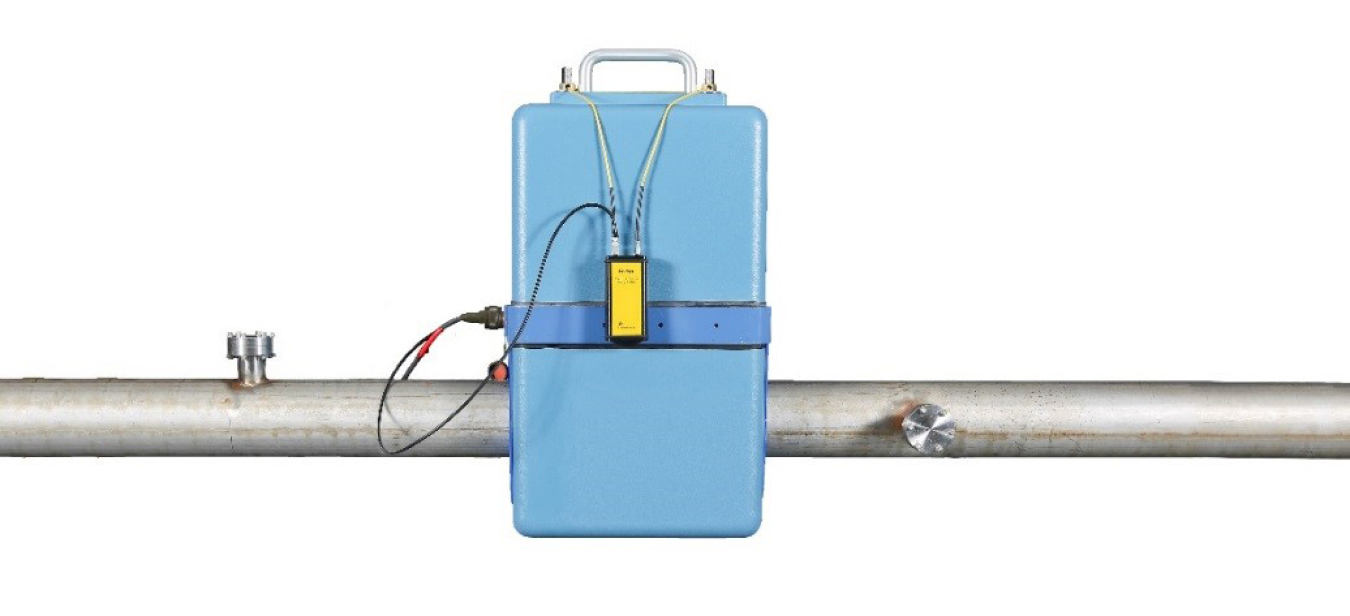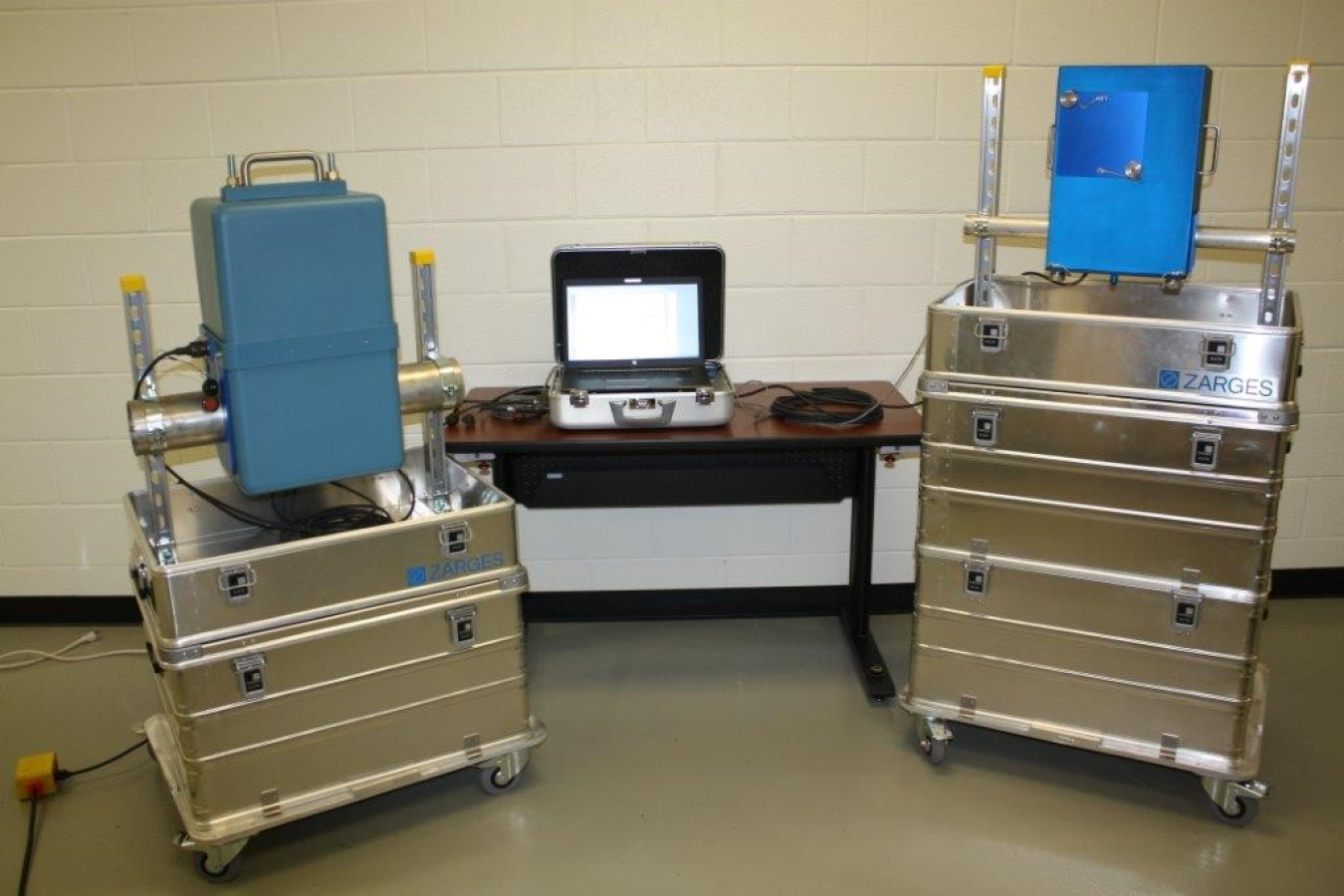
As part of its nonproliferation mission, NNSA develops capabilities that help strengthen the International Atomic Energy Agency’s (IAEA) nuclear safeguards mission. Safeguards enable the IAEA to provide credible assurances that nuclear material is only used for peaceful purposes. U.S. national laboratories - Oak Ridge National Laboratory and Los Alamos National Laboratory, supported by Pacific Northwest National Laboratory – developed the On-line Enrichment Monitor (OLEM) and transferred it to the IAEA, which will use it to verify compliance with safeguards agreements.
OLEM allows inspectors to measure the enrichment level of uranium as it flows through a gas centrifuge enrichment plant. To determine the level of enrichment, OLEM must measure the concentration of uranium-235 atoms passing through a pipe in a fixed period of time. A detector measures a particular gamma-ray emitted by U-235 atoms. The number of gamma rays emitted is proportional to both the level of enrichment and the amount of UF6 (or gas density) in the pipe. OLEM estimates the density of the gas in the pipe by measuring the temperature and pressure of the gas.
These types of data are collected and analyzed by a small computer contained inside OLEM. The data are processed continuously by computer algorithms; minimal human interface is necessary to extract results. These analyses are transmitted through an encrypted network to a remote computer, where an IAEA inspector can retrieve and evaluate them.
OLEM is a groundbreaking safeguards technology because it provides real-time measurements while material is moving through an industrial process, rather than the previously available sampling techniques, which could take up to three weeks to yield results. Not only are the results available in real-time, allowing inspectors to monitor safeguards more effectively, but OLEM also enables the IAEA to implement safeguards agreements in a more cost-efficient way. OLEM was originally developed to monitor a U.S.-Russia HEU downblending agreement.
How it works
Imagine some marbles are rolling through a pipe. Some of them are blue (representing Uranium-238), and some of them are yellow (representing Uranium-235). OLEM, which is hooked to the outside of the pipe, can measure the number of yellow marbles relative to the total number of marbles, and can therefore measure the level of enrichment of the uranium gas inside. This allows IAEA inspectors to verify the truthfulness of declarations that have been made under safeguards agreements.

